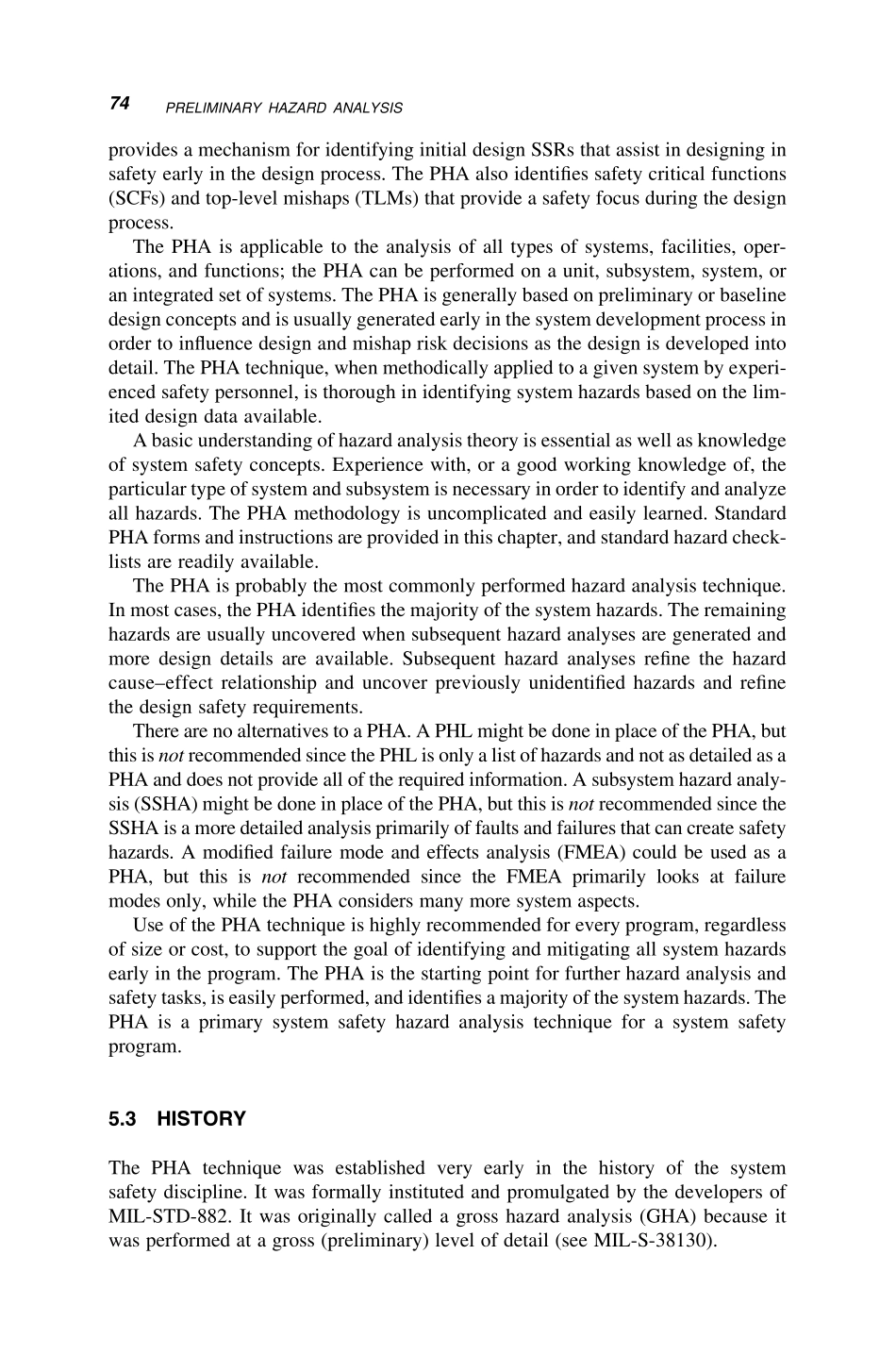Chapter5Preliminary HazardAnalysis5.1INTRODUCTIONThe preliminary hazard analysis (PHA) technique is a safety analysis tool foridentifying hazards, their associated causal factors, effects, level of risk, and mitigat-ing design measures when detailed design information is not available. The PHAprovides a methodology for identifying and collating hazards in the system andestablishing the initial system safety requirements (SSRs) for design from prelimi-nary and limited design information. The intent of the PHA is to affect the design forsafety as early as possible in the development program. The PHA normally does notcontinue beyond the subsystem hazard analysis (SSHA).5.2BACKGROUNDThis analysis technique falls under the preliminary design hazard analysis type(PD-HAT) because it evaluates design at the preliminary level without detailedinformation. The analysis types are described in Chapter 3. Gross hazard analysisand potential hazard analysis are alternate names for this analysis technique.The purpose of the PHA is to analyze identified hazards, usually provided by thepreliminary hazard list (PHL), and to identify previously unrecognized hazards earlyin the system development. The PHA is performed at the preliminary design level, asits name implies. In addition, the PHA identifies hazard causal factors, conse-quences, and relative risk associated with the initial design concept. The PHA73Hazard Analysis Techniques for System Safety, by Clifton A. Ericson, IICopyright # 2005 John Wiley & Sons, Inc.provides a mechanism for identifying initial design SSRs that assist in designing insafety early in the design process. The PHA also identifies safety critical functions(SCFs) and top-level mishaps (TLMs) that provide a safety focus duri...


